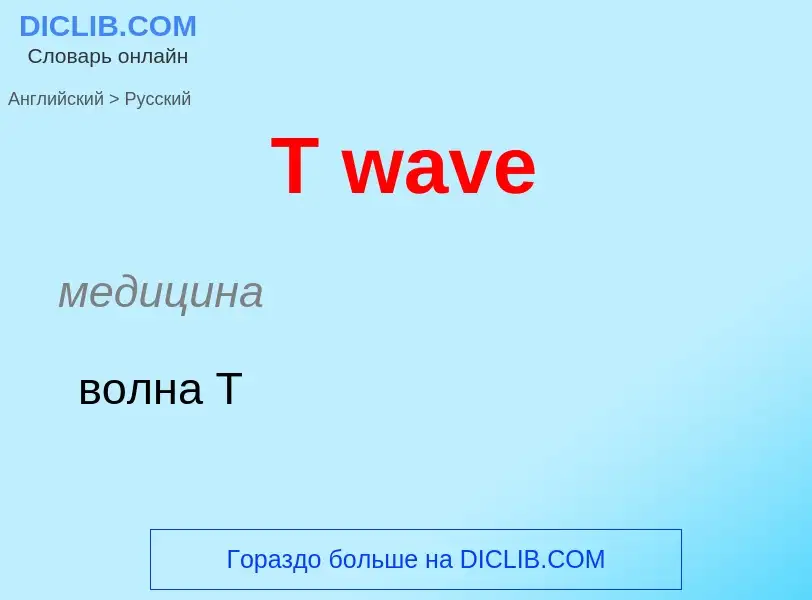Traducción y análisis de palabras por inteligencia artificial ChatGPT
En esta página puede obtener un análisis detallado de una palabra o frase, producido utilizando la mejor tecnología de inteligencia artificial hasta la fecha:
- cómo se usa la palabra
- frecuencia de uso
- se utiliza con más frecuencia en el habla oral o escrita
- opciones de traducción
- ejemplos de uso (varias frases con traducción)
- etimología
T wave - traducción al ruso
медицина
волна Т
[t]
сокращение
от to (перед инфинитивом, начинающимся с гласной)
Definición
. ·сокр. т. е., то есть; т. к., так как; и т. д. и так далее; и т. п., и тому подобное; т., том; тысяч.
Wikipedia
In electrocardiography, the T wave represents the repolarization of the ventricles. The interval from the beginning of the QRS complex to the apex of the T wave is referred to as the absolute refractory period. The last half of the T wave is referred to as the relative refractory period or vulnerable period. The T wave contains more information than the QT interval. The T wave can be described by its symmetry, skewness, slope of ascending and descending limbs, amplitude and subintervals like the Tpeak–Tend interval.
In most leads, the T wave is positive. This is due to the repolarization of the membrane. During ventricle contraction (QRS complex), the heart depolarizes. Repolarization of the ventricle happens in the opposite direction of depolarization and is negative current, signifying the relaxation of the cardiac muscle of the ventricles. But this negative flow causes a positive T wave; although the cell becomes more negatively charged, the net effect is in the positive direction, and the ECG reports this as a positive spike. However, a negative T wave is normal in lead aVR. Lead V1 generally have a negative T wave. In addition, it is not uncommon to have a negative T wave in lead III, aVL, or aVF. A periodic beat-to-beat variation in the amplitude or shape of the T wave may be termed T wave alternans.

